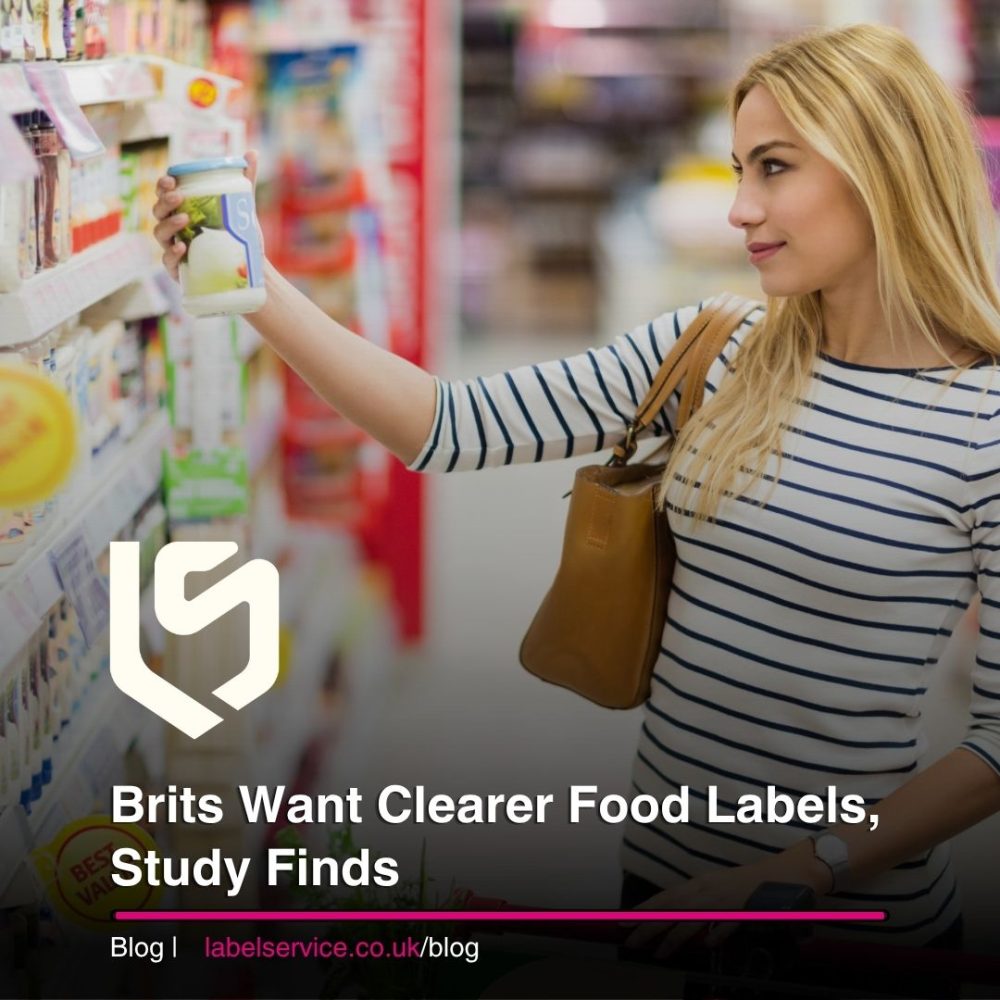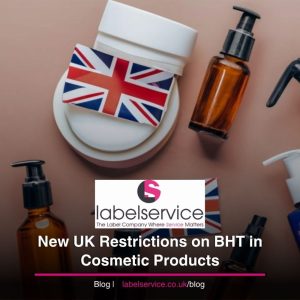Food labelling plays a vital role in influencing consumer choices and supporting public health in the UK. Its effectiveness directly impacts consumers’ ability to make informed decisions about their diets and overall well-being. This whitepaper, based on comprehensive research commissioned by NSF involving 2,000 UK adults, explores the significance, effectiveness, challenges, and consumer expectations surrounding food labelling.
For food brands, adhering to labelling regulations is essential—not only to meet legal obligations but also to foster consumer trust and uphold transparency. However, in today’s globalised food market, ensuring compliance has become increasingly complex. As dietary trends shift, new ingredients are introduced, and scientific insights into nutrition evolve, food companies must continuously update their labels to reflect these changes.
Additionally, the expansion of international trade requires brands to navigate a web of diverse labelling standards across different countries, making compliance a demanding and resource-intensive process. This growing complexity highlights the need for strong internal systems and expertise within food companies to ensure labelling remains accurate, up to date, and aligned with both regulatory requirements and consumer expectations.
Food labelling significantly influences consumer purchasing behaviour in the UK. Recent research reveals that 76% of UK adults say they at least occasionally read food labels before buying products. This percentage climbs to 82% among those aged 18-34, demonstrating the value younger consumers place on label information. Additionally, nearly half (45%) of UK adults report paying more attention to food labelling compared to five years ago, with this figure rising to 49% among 18-34-year-olds, reflecting a growing awareness and interest in food transparency.
The influence of food labels extends beyond the initial purchase decision, as they also shape dietary choices and enable consumers to compare products. Just under half (49%) of UK adults agree that current food labels provide them with enough information to make the right food choices. However, notably fewer (29%) agree that current labels adequately address sustainability concerns, indicating a gap between consumer expectations and the information provided on labels.
The impact on dietary choices
Food labels play a crucial role in helping consumers make informed dietary choices. When it comes to ultra-processed foods (UPFs), UK adults are more likely to report that it is easy to identify them through food labels (48%). However, three in ten (31%) still find it difficult, revealing room for
improvement in labelling practises. Younger adults demonstrate a much higher comprehension of food labelling in this area, with 63% reporting that they find it easy to identify UPFs, compared to 39% of those over 55.
The trust consumers place in health claims on food packaging also varies significantly by age. UK adults are most likely to think that health claims are untrustworthy (44%), with this figure increasing to 57% among those over 55. In contrast, younger people aged 18-34 are over twice as likely to say that they think health claims are trustworthy compared to those over 55 (60% vs 25%). These findings underscore the importance of clear, accurate, and age-appropriate food labelling in supporting healthy dietary choices across different consumer segments. By providing transparent information about the nutritional content and processing methods of food products, labels can empower consumers to make more informed decisions about their health and well-being.
Challenges in food label comprehension
Despite the general understanding of food labelling among UK consumers, there remain significant challenges in comprehending certain aspects of food labels. These challenges have an impact on consumers’ ability to make informed decisions about their food choices and overall health.
Complexity of nutritional information
One of the primary challenges consumers face is the complexity of nutritional information presented on food labels. While 64% of UK adults report understanding nutritional information, a significant portion still struggles to interpret and apply this data to their dietary needs. The use of technical terms, percentages, and serving sizes can be confusing for many consumers, particularly those with lower levels of nutrition literacy. This complexity can lead to misinterpretation or disregard for important nutritional facts, hindering the ability to make healthier food choices.
To address this challenge, there is a growing push for standardisation of front-of-pack nutritional labelling (FoPNL) across the EU. Currently, various government-endorsed FoPNLs are in use, such as the Nutri-Score, Keyhole, and Nutrinform battery. However, these voluntary schemes have been criticised for not being consumer-friendly or providing adequate information about the nutritional quality of food products. A standardised, mandatory FoPNL system could help simplify nutritional information and enable consumers to make more informed decisions at a glance.
Another area of concern is the comprehension of sustainability claims on food labels. The research reveals that only 56% of UK adults understand sustainability claims, and even fewer (29%) believe that current food labels adequately address sustainability concerns. This lack of understanding can be attributed to the absence of standardised definitions and criteria for sustainability claims, as well as the proliferation of vague or misleading statements. Consumers increasingly demand transparency regarding the environmental impact of their food choices, but the current labelling landscape falls short in providing clear, reliable information. The development of standardised eco-labels and more stringent regulations around sustainability claims could help bridge this gap and empower consumers to make more environmentally conscious decisions.
Understanding Health Claims on Food Labels
Interpreting health claims on food labels remains a significant challenge, particularly for older consumers. Research shows that 57% of those over 55 find health claims unreliable, compared to just 27% of 18-34-year-olds. This disparity underscores the need for clearer, evidence-based health claims that can be easily understood across all age groups.
The “health halo” effect, where terms like “organic” or “natural” create a perception that a product is healthier overall, further complicates consumer understanding. This can lead to misconceptions and uninformed purchasing decisions. Stricter regulations on health-related claims, combined with consumer education efforts, could help minimise misinterpretation and promote more accurate and transparent communication of health benefits.
Overcoming these challenges requires collaboration between regulatory bodies, food manufacturers, and consumer advocacy groups. By focusing on clarity, standardisation, and transparency in food labelling, consumers can be better equipped to make informed choices. This, in turn, supports improved public health outcomes and fosters a more sustainable food system. Overall, younger people are much more trusting of health claims, as those aged 18-34 are over twice as likely to say that they think health claims are trustworthy compared to over 55s (60% vs 25%).
Growing Consumer Expectations for Labeling Improvements
With rising health awareness and environmental consciousness, consumer expectations for food labelling have evolved significantly. Research highlights an increasing demand for clearer, more detailed, and standardised labelling practices that provide transparent information on allergens, processing methods, and sustainability.
One of the most pressing consumer demands is for clearer and more prominent allergen warnings on food labels. With food allergies on the rise, particularly among younger generations, consumers are seeking easily identifiable and comprehensive allergen information to ensure their safety and well-being. The research indicates that 65% of UK adults consider comprehensive allergen information to be one of the most useful additions to food labelling. This sentiment is particularly strong among younger consumers, with 71% of those aged 18-34 prioritising allergen information on labels.
However, the proliferation of precautionary allergen labels and sustainability claims on food packaging may be overwhelming consumers, potentially obscuring critical allergen information and compromising food safety for allergic individuals. This highlights the need for a balanced approach to food labelling that prioritises essential safety information while still addressing consumer demands for transparency and sustainability.
Another key area of consumer interest is detailed processing information. The research reveals that 70% of UK adults consider comprehensive processing information to be one of the most useful additions to food labelling. This demand is particularly pronounced among younger consumers, with 77% of those aged 18-34 expressing a desire for detailed processing information on labels.
This growing interest in processing methods reflects a broader trend towards clean label foods and a heightened awareness of the potential health implications of ultra-processed foods. As consumers seek to make more informed choices about the foods they consume, there is a clear need for food manufacturers to provide transparent and easily understandable information about their processing methods.
Sustainability has become an increasingly important consideration for consumers when purchasing food products. However, the research indicates that only 29% of UK adults believe that current food labels adequately address sustainability concerns. This highlights a significant gap between consumer expectations and the information provided on labels.
To bridge this gap, there is a growing demand for standardised sustainability metrics on food labels. The research reveals that 59% of UK adults consider an environmental impact score to be a useful addition to food labelling. This demand is particularly strong among younger consumers, with 73% of those aged 18-34 expressing an interest in seeing environmental impact scores on labels.
The development of standardised sustainability metrics would enable consumers to make more informed choices based on the environmental impact of their food purchases. However, implementing such a system presents significant challenges, as it would require a coordinated effort among food manufacturers, retailers, and regulatory bodies to ensure consistency and reliability.
As consumer demands for clearer allergen warnings, detailed processing information, and standardised sustainability metrics continue to grow, food manufacturers and regulatory bodies must work together to develop labelling practices that meet these evolving expectations. By prioritising transparency, safety, and sustainability, the food industry can foster greater trust among consumers and contribute to a healthier, more sustainable food system.
Premium pricing for comprehensive labelling. Just under a third (32%) would be willing to pay more for food products which have more comprehensive and transparent food labelling. However, three fifths (60%) reject this idea, rising to 75% amongst those aged over 55. Of those who said they would be prepared to pay more, better nutritional information (36%), ingredients information (31%) and organic certification (26%) top the list. People were the least willing to pay more for allergen warnings (21%) and country of origin information (20%).
The exploration of consumer insights into food labelling in the UK reveals a complex landscape of expectations and challenges. Food labels have a significant influence on purchasing decisions, dietary choices, and product comparisons, with consumers increasingly seeking clear, comprehensive information about ingredients, nutritional content, and sustainability. However, challenges persist in comprehending complex nutritional data, interpreting sustainability claims, and understanding health benefits, particularly among older consumers.
To address these issues, there’s a growing need for clearer allergen warnings, detailed processing information, and standardised sustainability metrics on food labels. As consumer demands evolve, the food industry must adapt to provide more transparent, accessible, and reliable labelling practices. For more information regarding food labelling requirements, you can visit nsf.org. By prioritising clarity and consumer education, we can empower shoppers to make informed decisions, ultimately contributing to better public health outcomes and a more sustainable food system.

















